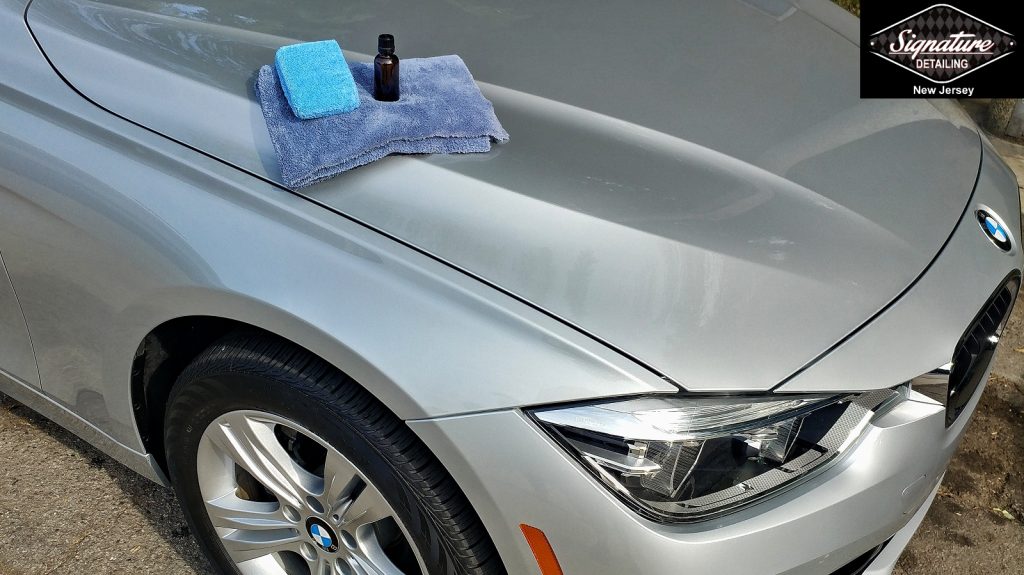Long-Term Results with Professional Ceramic Coating Philadelphia Applications
Long-Term Results with Professional Ceramic Coating Philadelphia Applications
Blog Article
Why Ceramic Coating Is the Ultimate Solution for a Flawless Finish
Ceramic layer has arised as a leading solution for those seeking a flawless coating for their lorries, thanks to its impressive resilience and protective attributes. What variables absolutely established ceramic finishing apart?
What Is Ceramic Covering?

When applied appropriately, ceramic finish develops a hydrophobic surface area that repels water and dirt, making it easier to clean and preserve. Unlike standard waxes or sealers, which normally use brief security, ceramic coverings can last for a number of years, depending on the item high quality and application approach. The process of using ceramic layer requires meticulous preparation, including comprehensive cleaning and sometimes paint modification, to make certain optimum bonding and performance.
Ceramic finishes are not restricted to vehicle surfaces; they can also be used on numerous products, consisting of glass, metal, and plastics, giving a functional option for enhancing security. Overall, ceramic covering stands for a significant improvement in surface protection technology, integrating both practical and visual benefits for a vast array of applications.
Advantages of Ceramic Finishing
While many surface defense choices exist, the benefits of ceramic coating attract attention due to its special homes and lasting efficiency. One of the primary advantages is its remarkable toughness. Ceramic Coating Philadelphia. Unlike standard wax or sealants that need constant reapplication, ceramic layers provide a durable layer that can last for a number of years, dramatically decreasing upkeep initiatives
Another remarkable benefit is improved protection against environmental contaminants. Ceramic finishings create a hydrophobic surface area that drives away water, dirt, and different toxins, making it much easier to clean up. This function not just preserves the lorry's look but likewise minimizes the threat of deterioration and oxidation, especially in rough weather.
Furthermore, ceramic finishings offer superior resistance to UV rays, preventing fading and deterioration of paint with time. This UV defense is vital for preserving the visual value of vehicles and surfaces exposed to route sunlight.
In addition, the shiny coating attained with ceramic finish boosts the general aesthetic charm, giving surfaces a showroom-quality shine. On the whole, ceramic coatings represent a significant advancement in surface defense technology, offering long-lasting benefits that deal with both aesthetic and practical needs.
Just How It Works
Understanding the science behind ceramic finishes reveals just how they give such impressive protection and longevity. At its core, a ceramic coating is a fluid polymer that chemically bonds with the car's factory paint. This bonding produces a safety layer that is both hydrophobic and oleophobic, repelling water, dust, and oil. The primary element of most ceramic finishes is silicon dioxide (SiO2), which is originated from quartz. This compound adds to the coating's firmness and resistance to scrapes, UV rays, and environmental impurities.
The application process entails numerous actions, consisting of surface preparation, which is critical to achieving ideal adhesion. When applied, the covering undergoes a curing process, during which it solidifies and forms a semi-permanent bond with the paint surface area. This bond is what identifies ceramic finishings from standard waxes and sealants, providing a longer-lasting safety barrier that can sustain for years.
Furthermore, the density of the coating can boost its protective qualities, ensuring that it can hold up against severe conditions. Eventually, the science of ceramic layers incorporates innovative materials with innovative why not check here application techniques to deliver an unrivaled degree of security and visual enhancement for vehicles.
Contrast With Conventional Techniques
When contrasted to conventional paint protection approaches such as sealers and waxes,The advantages of ceramic coverings become specifically evident. While waxes supply a short-lived shine, usually lasting a couple of weeks to a pair of months, ceramic coatings provide a resilient protective layer that can sustain for several years. This sturdiness considerably lowers the frequency of reapplication, making ceramic coverings a much more economical service gradually.
In addition, traditional approaches commonly require considerable preparation and several applications find out to accomplish an acceptable level of security. On the other hand, ceramic coverings bond at a molecular level with the automobile's surface area, developing a durable guard against ecological contaminants like UV rays, acid rainfall, and road salts. This bond enhances the car's resistance to scratches and swirl marks, which prevail with conventional waxes and sealants.
Furthermore, the hydrophobic properties of ceramic finishings push back water and dirt, leading to easier cleaning and maintenance. In comparison, wax and sealant-treated surfaces can bring in crud, demanding even more frequent cleaning - Ceramic Coating Philadelphia. Generally, ceramic coatings not just offer remarkable security yet additionally provide a more visually attractive and enduring finish, establishing them as the recommended choice for discerning automobile owners
Application and Maintenance Tips

Using a foam applicator, apply the finish in tiny areas, adhering to the supplier's standards relating to density and overlap. Permit sufficient curing time in between layers, normally 1 day, to guarantee proper bonding. After application, it is vital to prevent exposure to water or severe elements for a minimum of a week to allow the finish to completely cure.
For upkeep, wash the lorry consistently with pH-balanced soaps and avoid rough products. Touchless cars and truck laundries are advised to minimize scraping. In addition, using a ceramic maintenance spray can improve the coating's hydrophobic residential properties and longevity. Normal evaluations for any indications of wear will aid maintain the coating's image source stability and protect that excellent finish.
Final Thought
In final thought, ceramic coating arises as an exceptional choice for achieving a flawless auto coating. By creating a durable bond with manufacturing facility paint, ceramic covering successfully shields versus scratches, UV rays, and environmental pollutants.

Report this page